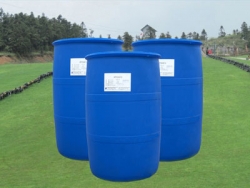Alkyl polyglycosides contain two groups with opposite polarity or solubility. The polar part is a hydrophilic group, and the non-polar part is a hydrophobic or lipophilic group. Generally, it can be divided into non-ionic, anionic, cationic and zwitterionic types.

Anionic type: It is ionized in aqueous solution to produce organic anions with surface activity. Such surfactants have negative charges on their polar groups in solution. For example, alkyl benzene sulfonic acid, alkyl alcohol sulfate, alkyl sulfate acyl ether ester, sodium or potassium salt of long-chain fatty acid, etc.
Cationic type: It is ionized in aqueous solution to produce organic cations with surface activity. For example, fatty amine salts and quaternary ammonium bases. In the solution, the polar part of such surfactant is positively charged. Cationic surfactants are useful for pigment dispersion, and many of them are mould proof, irritant and toxic.
Non ionic type: no ions are produced in water. This type of surfactant can be dissolved in water because it contains functional groups with strong hydrophilicity. For example, condensation products of fatty alcohol, fatty acid or alkyl phenol with ethylene oxide, polyoxyethylene alkyl amide, etc. Nonionic surfactants are often used together with anionic surfactants to provide space barrier between particles and help prevent sinking and flocculation.
Zwitterionic type: according to different media, zwitterionic surfactants can be ionized in aqueous solution and generate compounds with cationic or anionic surfactant characteristics. For example, imidazoline, amino carboxylic acid, amino sulfonic acid and substituted derivatives of amino phosphoric acid. The zwitterionic surfactant can be either anionic or cationic, depending on the pH value of the solution.
Manufacturing pigment dispersion phase is the theme of ink, and it is a very important topic for pigment to keep fine and uniform dispersion state without flocculation. Disperse pigments can be achieved by adding dispersants, and surfactants are commonly used dispersants. Whether it is to manufacture water-based or solvent based inks, surfactants are added as an important dispersant and grinding auxiliary in the pigment dispersion stage, which takes advantage of the wetting and stable dispersion of surfactants. Surfactants are almost used in the whole process of the preparation of organic ink pigments. Almost all organic ink pigments must be treated with surfactants to achieve the purpose of modification.